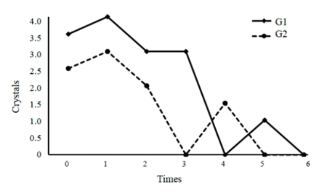Renal profile and urinary fractional excretion of calcium, phosphorus, and magnesium of lambs fed with different contents of phosphorus
DOI:
https://doi.org/10.21708/avb.2021.15.4.10228Resumen
Obstructive urolithiasis is common in confined sheep, and a predominant factor predisposing animals to this condition is nutritional management. The objective of this study was to evaluate the effect of different concentrations of phosphorus (P) on urinalysis, serum urea and creatinine, and serum and urine concentrations of calcium (Ca), P, and magnesium (Mg), as well as to establish the fractional excretion (FE) of these elements in confined lambs. Thirty male Santa Inês x Ile de France sheep at four months of age were divided into two groups according to the diet: Group 1 (G1, n = 15), with 0.43% P in their feed; and Group 2 (G2, n = 15) with 0.65% P. The diets consisting of 10% Coast-cross hay and 90% of a concentrate of soybean meal, wheat, and crushed corn were provided for 90 consecutive days, with water ad libitum. The time points (M) of blood and urine collection were determined as M0, immediately before the beginning of the diet, and at 15-day intervals: M1, M2, M3, M4, M5, and M6. Phosphorous-rich diets favored the appearance of triple phosphate crystals in both groups, causing calculogenesis in more than one third of the animals (11/30), emphasizing the relevance of conducting laboratory tests to aid in urolithiasis diagnosis. In addition, FE revealed an increased renal excretion of excess minerals in the diet, and therefore a greater predisposition for stone formation in relation to nutritional management.
Descargas

Descargas
Publicado
Número
Sección
Licencia
Autores que publicam na Acta Veterinaria Brasilica concordam com os seguintes termos: a) Autores mantém os direitos autorais e concedem à revista o direito de primeira publicação, com o trabalho simultaneamente licenciado sob a Licença Creative Commons Attribution que permite o compartilhamento do trabalho com reconhecimento da autoria e publicação inicial nesta revista. b) Autores têm autorização para assumir contratos adicionais separadamente, para distribuição não-exclusiva da versão do trabalho publicada nesta revista (ex.: publicar em repositório institucional ou como capítulo de livro), com reconhecimento de autoria e publicação inicial nesta revista. c) Autores têm permissão e são estimulados a publicar e distribuir seu trabalho online (ex.: em repositórios institucionais ou na sua página pessoal) a qualquer ponto antes ou durante o processo editorial, já que isso pode gerar alterações produtivas, bem como aumentar o impacto e a citação do trabalho publicado (Veja O Efeito do Acesso Livre).


 Esta obra está licenciada com uma Licença
Esta obra está licenciada com uma Licença 